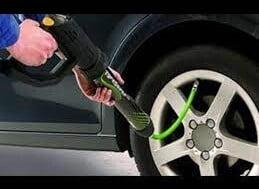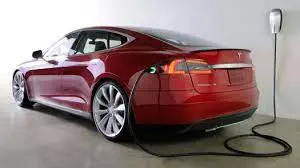all english artical in end
هل من الأمن استخدام شاحن سيارتك الكهربائية في اي فيشة متواجدة و أستخدام اي مشترك لتطويل وتوصيل الكابل بالشاحن…؟
تعتمد على طريقة وروتينك اليومي لشحن السيارة الكهربائية اما التفاصيل فهي كالأتي:
– اذا كانت الفيشة المستخدمة في المنزل مخصصة لشحن السيارة الكهربائية فقط و كابل الكهرباء الداخلي يستطيع تحمل ما لا يقل عن 32 امبير وكذلك الحماية والمفاتيح مصممة لتحمل هذا الأمبير..فلا وجود لمشاكل في هذه الحالة
ولكن عليك الحذر في حالة استخدام الشاحن في الطريق او عند صديق او في Socket غير معلوم توصيفه وذلك للأسباب الأتية:
– يمكن ان يكون على نفس فيشة الكهرباء التي تم عليها توصيل الشحان ان تكون مشتركة وموزعة للكهرباء مع فيشة اخرى وفي حالة توصيل اي حمل اخر على سبيل المثال (براد الماء الكهربائي) على الفيشة الاخرى في نفس الوقت الذي تقوم السيارة بعملية الشحن فهذا سيؤدي الى ارتفاع الحمل والامبير المسحوب على كابلات التوصيل و مفاتيح الحمايات و في اغلب الاحيان في حالة حدوث هذه المشكلة يقوم الفيوزومفاتيح الحماية بالفصل ولكن قد يؤدي لأشتعال الكابل و الــsocket وبالتالي اتلاف الشاحن وعرضة لخطر حريق المنزل !
و من ضمن المشاكل الأخرى التي قد يقع فيها الكثير من المستخدمين وهي استخدام كابلات كهرباء ومشتركات لتطويل الكابل الخاص بالشاحن كما هو موضح في الصورة و في اغلب هذه الكابلات والمشتركات يكون مواصفات السلك الداخلي قطره 1.5 مم مربع وهذا بالطبع غير امن وكافي لشحن سيارة كهربائية ويجب الا يقل عن 2.5 مم مربع في حالة الرغبة في شحن السيارة على اقل امبير متاح في الشاحن الكهربائي.
هذه المشتركات والوصلات تم عملها بالأساس لتشغيل الاحمال المسماة بــcycling load اي الاحمال التي تقوم بالعمل والفصل بشكل مستمرمثل (الثلاجات) ولا يتم تحميل هذه الكابلات او المشتركات بالأحمال الدائمة او حمل ثابت دائم كشاحن السيارة الكهربائية
بالأضافة الى ان اذا كان الشاحن في مكان مفتوح وعرضه للشمس بشكل دائم..فهذا سيؤدي لأرتفاع درجة حرارة الكابلات والمشتركات بشكل خطر و تبدأ الوصلات النحاسية في الأكسدة وايضا سقوط العزل.
ومن ضمن التوصيات التي نوصي بها دائما مستخدمي الشواحن المنزلية من ضرورة فحص من وقت لأخر اي علامات احتراق على الفيشة الكهربائية او الشاحن للأطمئنان على عملية التشغيل.
ايضا عدم فك وتوصيل الشاحن بصفة مستمرة و تثبيت فيشة ومكان خاص بشاحن السيارة الكهربائية لأن كثرة فصل وتوصيل الكهرباء قد يؤدي لاضعاف عملية التوصيل الكهربائي وبالتالي مشاكل في فيشة الكهرباء و كابل التوصيل مع الوقت.
اذا استفدت من هذه المعلومة نرجوا مشاركتها مع اصدقائك لعلها تكون مفيدة لتفادي مشكلة اكبر قد تحدث مستقبلا لملاك السيارات الكهربائية
Is it safe to use the charger of your electric car in any available socket and to use any subscriber to extend and connect the cable to the charger…?
It depends on the method and your daily routine for charging the electric car. The details are as follows:
– If the plug used in the house is intended for charging the electric car only, and the internal power cable can withstand at least 32 amps, as well as the protection and switches designed to withstand this amp..there are no problems in this case
But you should be careful if you use the charger on the road, with a friend, or in a socket whose description is unknown, for the following reasons:
– It can be on the same power plug on which the charger was connected to be shared and distributed to electricity with another plug. In the case of connecting any other load, for example (electric water cooler) to the other plug at the same time the car is charging, this will lead to a high The load and amps drawn on the connection cables and protection switches, and in most cases, if this problem occurs, the fuse switches are disconnected, but it may lead to ignition of the cable and socket, thus damaging the charger and at risk of a house fire!
Among the other problems that many users may fall into is the use of power cables and joints to extend the cable for the charger as shown in the picture, and in most of these cables and joints, the internal wire specifications are 1.5 mm square, and this is of course not safe and sufficient to charge an electric car and must not be Less than 2.5 square mm in case you want to charge the car at the lowest amperage available in the electric charger.
These joints and connections were made mainly to operate the loads called cycling load, that is, the loads that work and separate continuously, such as (refrigerators), and these cables or subscribers are not loaded with permanent loads or a permanent fixed load such as an electric car charger
In addition, if the charger is in an open place and exposed to the sun permanently.. this will lead to a dangerously high temperature of the cables and subscribers, and the copper connections begin to oxidize and the insulation will fall off.
Among the recommendations that we always recommend to users of home chargers, is the necessity of checking from time to time for any signs of burning on the electric plug or the charger to check on the operation process.
Also, do not disassemble and connect the charger on a continuous basis and install a plug and a special place for the electric car charger because the frequent disconnection and connection of electricity may lead to weakening the electrical connection process and thus problems with the power plug and the connection cable over time
If you benefited from this information, please share it with your friends, perhaps it will be useful to avoid a bigger problem that may occur in the future for owners of electric cars.
It depends on the method and your daily routine for charging the electric car. The details are as follows:
– If the plug used in the house is intended for charging the electric car only, and the internal power cable can withstand at least 32 amps, as well as the protection and switches designed to withstand this amp..there are no problems in this case
But you should be careful if you use the charger on the road, with a friend, or in a socket whose description is unknown, for the following reasons:
– It can be on the same power plug on which the charger was connected to be shared and distributed to electricity with another plug. In the case of connecting any other load, for example (electric water cooler) to the other plug at the same time the car is charging, this will lead to a high The load and amps drawn on the connection cables and protection switches, and in most cases, if this problem occurs, the fuse switches are disconnected, but it may lead to ignition of the cable and socket, thus damaging the charger and at risk of a house fire!
Among the other problems that many users may fall into is the use of power cables and joints to extend the cable for the charger as shown in the picture, and in most of these cables and joints, the internal wire specifications are 1.5 mm square, and this is of course not safe and sufficient to charge an electric car and must not be Less than 2.5 square mm in case you want to charge the car at the lowest amperage available in the electric charger.
These joints and connections were made mainly to operate the loads called cycling load, that is, the loads that work and separate continuously, such as (refrigerators), and these cables or subscribers are not loaded with permanent loads or a permanent fixed load such as an electric car charger
In addition, if the charger is in an open place and exposed to the sun permanently.. this will lead to a dangerously high temperature of the cables and subscribers, and the copper connections begin to oxidize and the insulation will fall off.
Among the recommendations that we always recommend to users of home chargers, is the necessity of checking from time to time for any signs of burning on the electric plug or the charger to check on the operation process.
Also, do not disassemble and connect the charger on a continuous basis and install a plug and a special place for the electric car charger because the frequent disconnection and connection of electricity may lead to weakening the electrical connection process and thus problems with the power plug and the connection cable over time
If you benefited from this information, please share it with your friends, perhaps it will be useful to avoid a bigger problem that may occur in the future for owners of electric cars.






